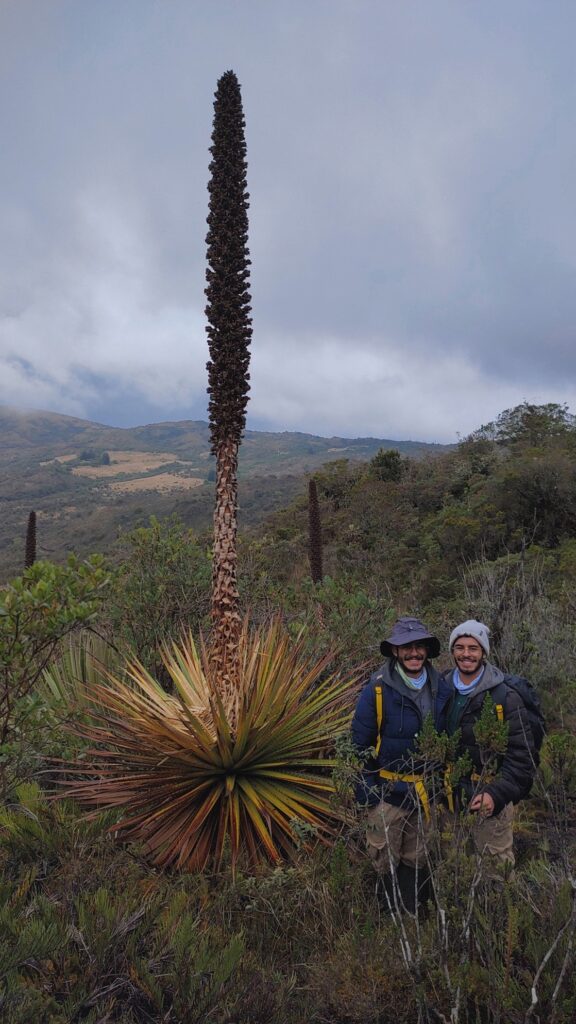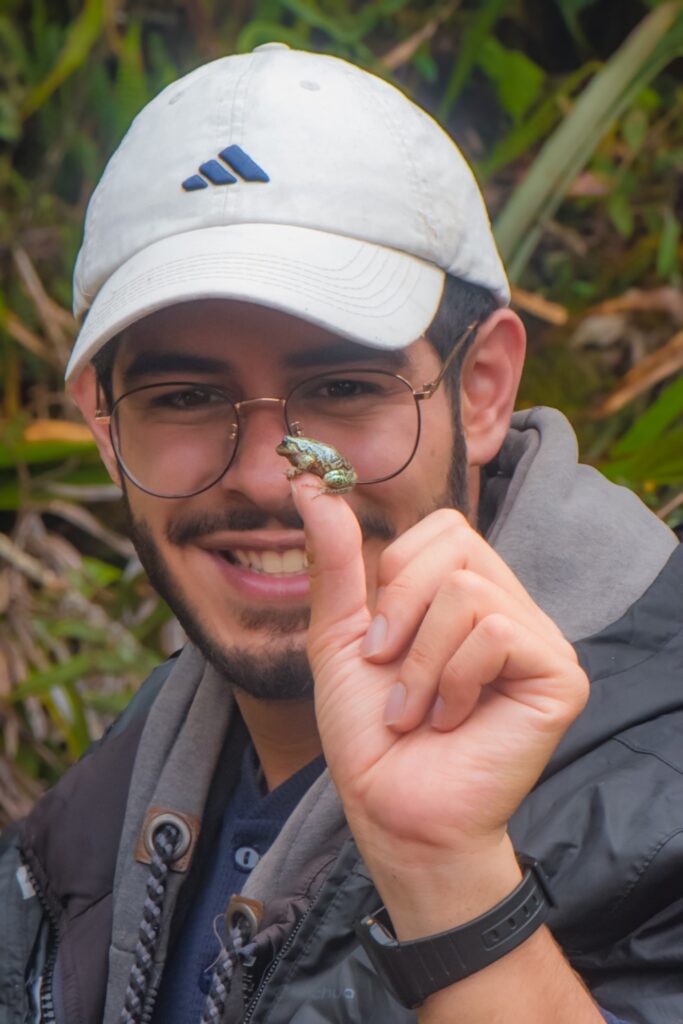Since I was a child, I have always had curiosity about nature. I remember my identical twin brother and I looking for bugs and thickhead ground snakes when we were kids in our home’s garden. I think that study biology in a biodiverse country like Colombia is a huge gift, because you are going to visit and study beautiful and species rich places that are going to open your mind wildly by meeting groups with huge adaptative radiations that are not well understood yet, like, for example, orchids, butterflies and birds. Fortunately for me, I was accepted in the “Universidad Nacional de Colombia” (UNAL) after presenting a very tough admission test, and I was not alone in that journey, because my brother also got admitted.

The UNAL is the home for the biggest biological collections in Colombia and some of them are also the biggest ones in South America. This is incredible because the main curators of the National Herbarium and National Zoological Collection are those who are also your professors during your degree, making it an incredible experience.
I fell in love with flowering plants during the course that changed my life, “Taxonomy of angiosperms”. There, it was easy to see the diversity of flora in Colombia’s territory, but also it made me to question myself: Why flowers are the way they are? How do they attract pollinators? Why are some pollinators attracted by certain species and not by others?
During my thesis, Prof. Julián Aguirre Santoro (actual curator of Latin America vascular plants at Missouri Botanical Garden), other collaborators, and I, studied together the sexual reproduction and pollination ecology of a high Andean “páramo” bromeliad. This experience for me was incredible, I made 62 consecutive weekly visits to the “páramo” trying to address this mystery. I met a lot of gorgeous high Andean specimens, making the “páramo” my favourite place on Earth by far.


Now, I will start my PhD returning to Colombia’s wild high Andes to understand better the complex network between floral visitors (hummingbirds, insects, etc.) and flowers. My main objective is to study the different floral traits exposed by flowering plants to attract pollinators by studying individuals that may have floral mimicry, and to describe better the behaviour of the different floral visitors in different plants, because not all that is attracted by a flower is an effective pollinator, some can be nectar robbers or can use the flower as a refugee.























































